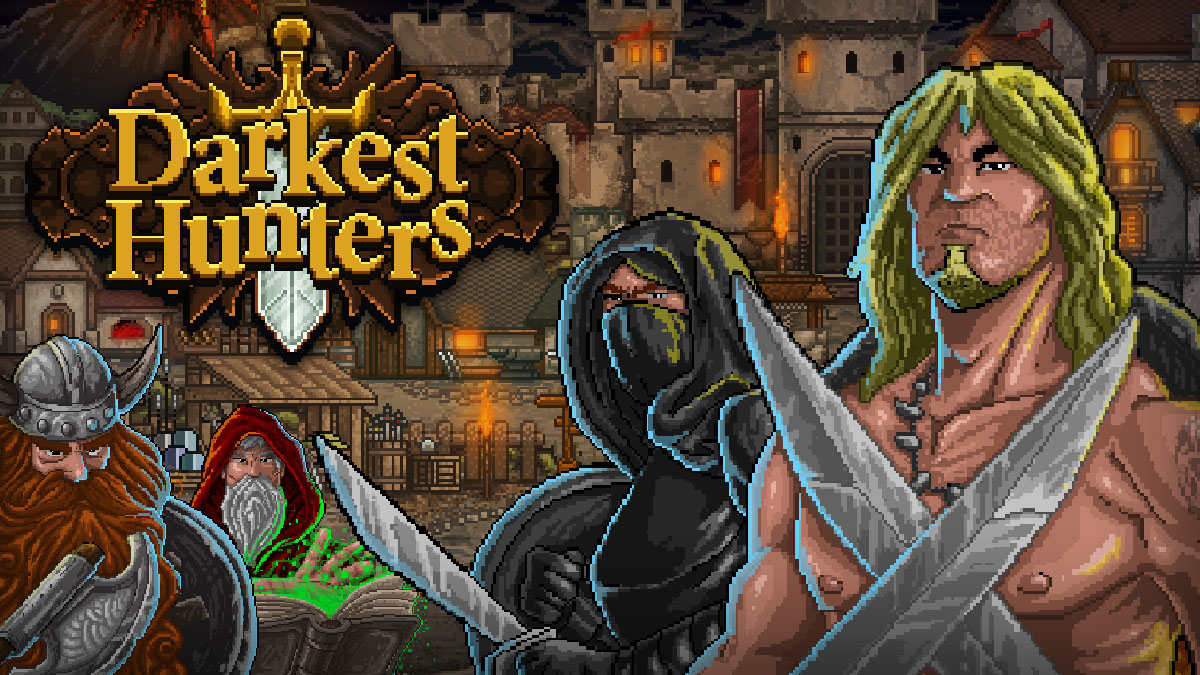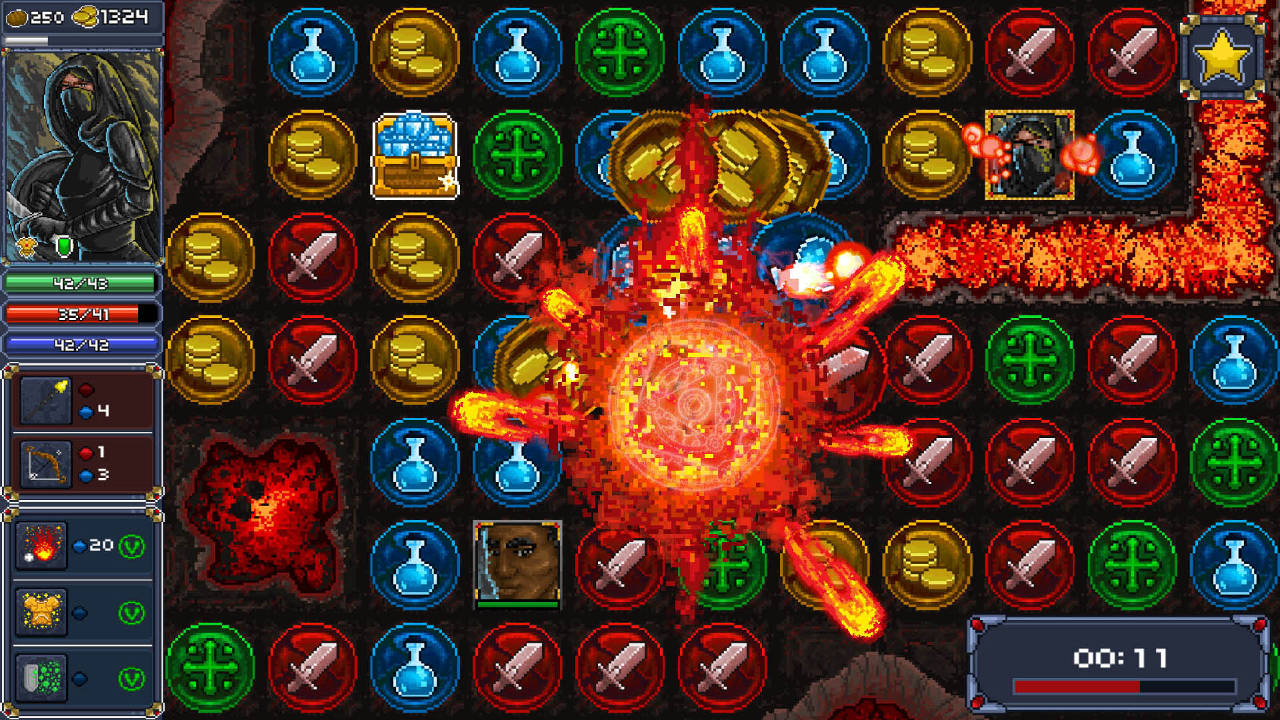A strange mashup that works well.
You enter a torch-lit village huddled in the oppressive shadow of an angry volcano. Lightning flashes in the distant sky as peasants walk furtively down a dirt road, heads hooded and eyes downcast. The castle at the far end of the village looks dark and foreboding and seems to hold no hope for you as you begin your noble quest.
Yeah, I know; so many games have started like this, and they all end with you dead in a dungeon. Take heart, because in Darkest Hunters you don’t always die in a dungeon. Sometimes you die right out in the open. A little sunshine is good, right?
This game harks back to the early 16-bit adventure games and throws in a little “match as many colored gems in a row as you can” as a way of engaging monsters. While it may sound like a strange mash-up, it works well. There are objectives on every round, and to achieve them all you will need to play each round more than once.
If you match enough gems in a single move they leave behind a more powerful version of that gem which will act a bit like a land mine for the monsters. You will need to use these powered-up crystals to set traps to help kill all the monsters. Some level goals are tied to using them as the primary way of defeating monsters or bosses. You also have access to various weapons: swords, bows, potions, and the like. All these methods keep the player thinking about more than just a hack-and-slash dungeon crawl, but don’t forget you are running on hit points and therefore will need to do a little hacking and slashing.
Speaking of hit points, there are three vital areas you need to monitor as you battle your way through all the levels. There are hit points (replenished by green gems), attack points (replenished by red gems), and mana points (replenished by blue gems). There is one other color of gem—everybody’s favorite: gold. Don’t forget to match plenty of the gold coins as you will need them to buy new items or to buy upgrades for your current gear. As expected, there seems to be no end of items you can buy or find, and all of them have the ability to be upgraded a number of times. This will keep you busy for quite a while because you will need the upgrades as you take on stronger monsters and badder bosses as you advance through the map. Even early in the game, you may need to play through some lower levels a few times so you can level up and collect enough coins to ensure you have enough hit points and armor to survive the boss.
To help with the landmine creation, don’t forget to make good use of the viewable field. As you make a line to connect a string of colored gems they will disappear and be replaced with new, randomly generated gems. A few careful back-and-forth moves and you can populate a sizeable area with one color of gem. String a lot of gems together and you can make rather a big bomb. If you have the time, it’s a good way to knock a boss down to melee range. Most of the bosses seem to be able to move quickly, so having a little help is a good idea.
Darkest Hunters is a more casual game in that you don’t need fast fingers and quick thinking to get you out of harm’s way. The game is turn-based so you can take some time to formulate a strategy, and on some levels you will need a good one. You can play as multiple heroes, and any level can be replayed any number of times so there is plenty of gameplay to be had. The mechanics are pretty simple and the look of the game is a bit primitive, but it is a fun waste of time. It’s also not very expensive at $5.30, making it a good value for money.
There was one glitch I noticed while playing; every now and then I saw some streak lines on the screen. They look like misplaced or errant swoosh effects. They don’t seem to hinder the game, but they do look out of place.
While you can play this game in either portable mode or docked, I would suggest sticking with playing directly on the Switch. Big can be nice, but using the Joy-Con to connect the games is slow at best. The touch screen is more intuitive, faster, and less frustrating. The only catch is the screen only recognizes one finger, and the command to scan across the field of play is the same as making a move. As such, you’ll often start panning around the screen when you want to start your move.
Review: Darkest Hunters (Nintendo Switch)
Good
Darkest Hunters is a good game (even with some misspelled text and odd streaks as noted) and provides plenty of play time for the price.





